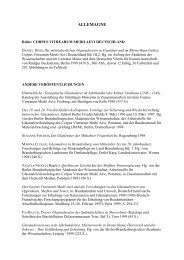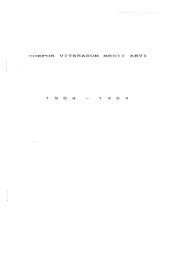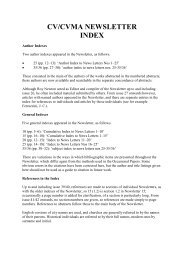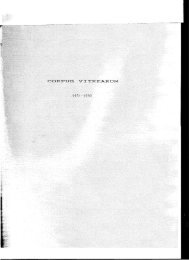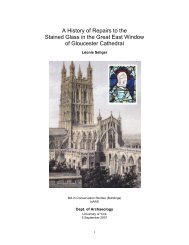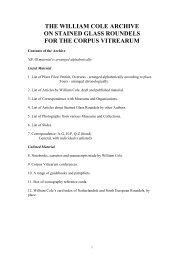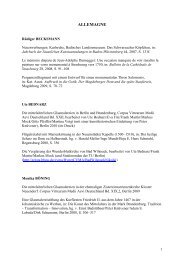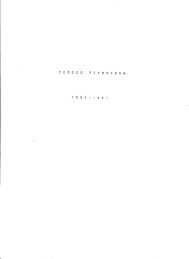BristolConference - Corpus Vitrearum Medii Aevi
BristolConference - Corpus Vitrearum Medii Aevi
BristolConference - Corpus Vitrearum Medii Aevi
You also want an ePaper? Increase the reach of your titles
YUMPU automatically turns print PDFs into web optimized ePapers that Google loves.
and glorious rosary) and the Annunciation and the Glorification of the Eucharist. These<br />
were subjects contextually linked with particular votive masses, with the liturgy at high<br />
Marian feasts and with the local Holy Blood Pilgrimage. The instructions of the donors<br />
concerning the choice of the pictorial programme clearly referred to the almost<br />
contemporary letters of the donation foundation and indulgence. An indulgence of 1356,<br />
offered for attendance at particular feast days and for donations to the building and<br />
furnishing fund, specifically referred to the honouring of the Seven Joys of the Virgin in<br />
word and image: 'qui coram ymagine beatae Mariae virginis septem ave Maria ob reoereniiam<br />
septem gaudiorum beatae Mariae virginis dixerini', In 1388 the town's most famous son,<br />
Heinrich Topler, for many years Biirgermeister, donated a sung mass at the altar of the<br />
Blessed Virgin Mary in St. lames's Church, which was to be celebrated on the eve of all<br />
Marian feasts. This donation was specifically dignified in a Papal indulgence of 1391which<br />
was granted for participating in the feasts of 'Nativitatis, Epiphanie, Resureciionis, Ascensionis<br />
et corporis domini nostri Jhesu Christi ae Penthecostes, necnon in Nativitatis, Annuneiatis,<br />
Purificationis et Assumptionis beatae Mariae oirginis', These were precisely the joyful and<br />
glorious events of the Life of the Virgin which - apart from two lost scenes - were depicted<br />
in the large medallions and in the Annunciation window in Rothenburg.<br />
Because of the agreement of 1388 to pull down the old Chapel of <strong>Corpus</strong> Christi and the<br />
Holy Blood, the need arose for a picture cycle (in wall painting and stained glass?)<br />
dedicated to these feasts to replace those originally in the destroyed chapel. In the peak<br />
period of the <strong>Corpus</strong> Christi cult and of pilgrimage to Rothenburg it was clearly essential to<br />
install a visual expression of the salvational effect of the Eucharist. The new Eucharist<br />
window of c.1390 is, furthermore, so closely based on the dedication of the destroyed chapel<br />
that it would be inexplicable without a direct connection. More than a century before the<br />
building of a new Holy Blood gallery at the west end in 1453/71 and its furnishing in 1505,<br />
the Eucharist window in the east choir - next to the Wondrous Blood reliquary - must have<br />
formed the programmatic core of the Rothenburg pilgrimage. The, at this time, highly<br />
unusual iconography of the value of the Eucharist for poor souls was based on<br />
contemporary texts of a widely accessible kind. It provides in the borders of both central<br />
panels of the window - with scenes of the celebration of the Eucharist and the solicitation<br />
for and donation of candles - a depiction of pious works encouraged by the church and of<br />
value to the individual's salvation.<br />
17



